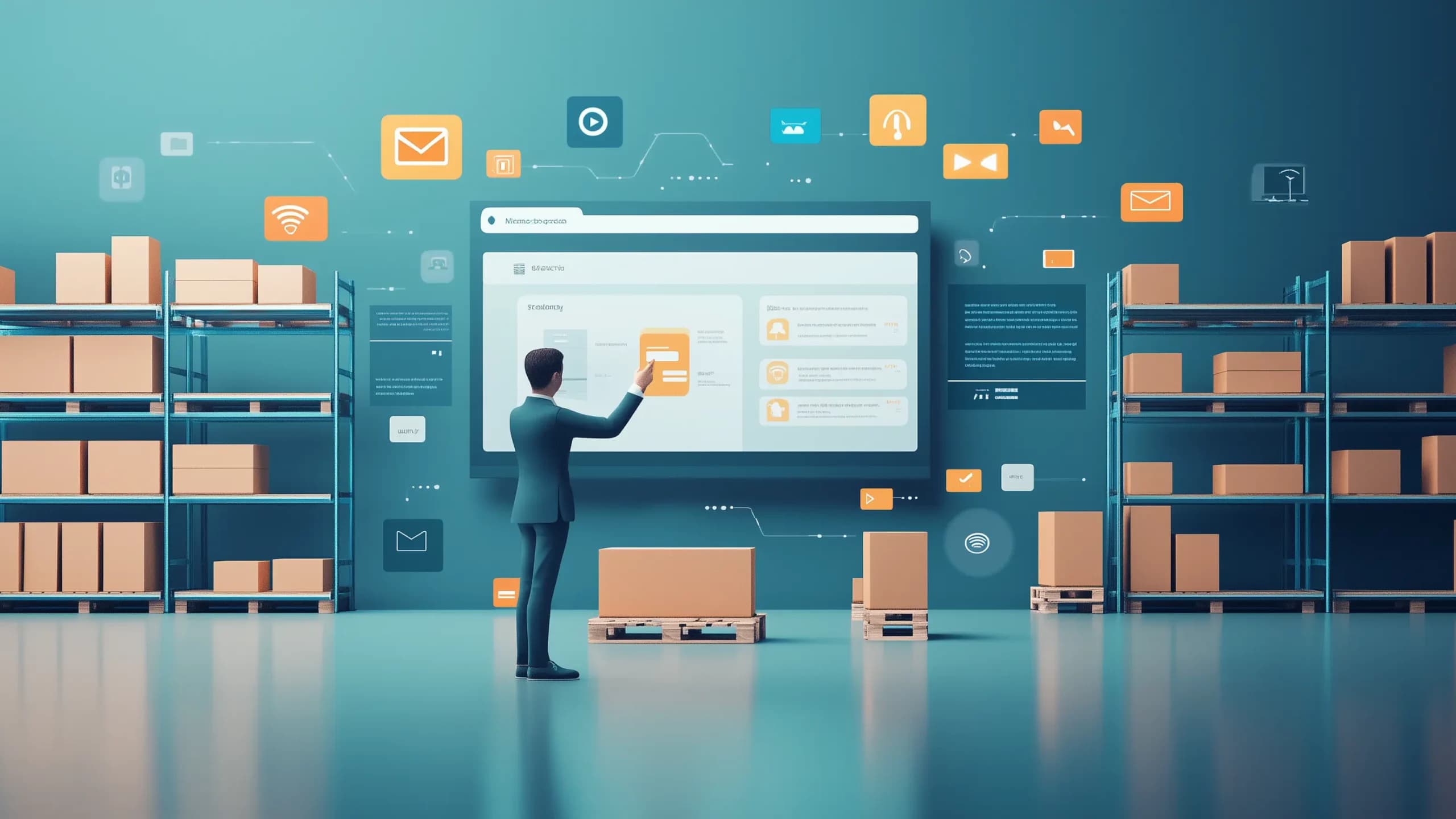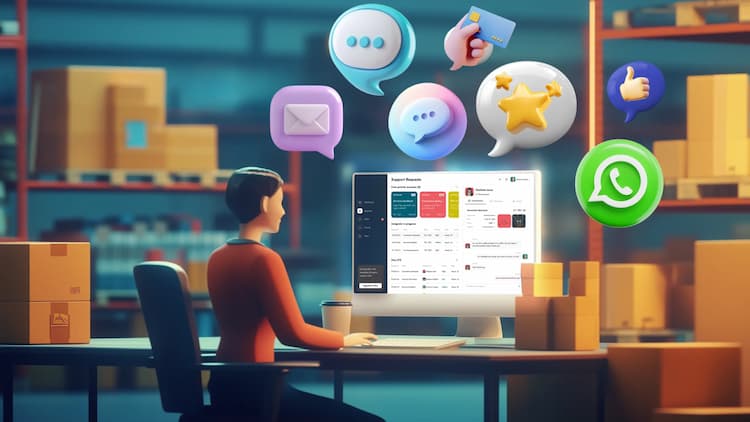Making B2B Communication Work for You

Summary
Table of Contents
In a nutshell, the lifeblood of your business is communication. Be it the negotiation with suppliers, the onboarding of new wholesale customers, or the management of partnerships, the words, tone, and approach that you choose have a significant impact on the eventual success. However, B2B communication is definitely not just about sending out refined emails or having short calls. It is about developing trust, building assets in the long-term and presenting the issue from the viewpoint of your partners.
Through this guide, I will introduce you to the importance of communication in B2B, the difference between B2B and B2C communication, and action plans on how to make it effective for your wholesale business. So, take your tea or coffee and enjoy the read.
Why B2B Communication is the Backbone of Your Business
Streamline Customer Communication
Manage orders, messages, and customer data seamlessly with one branded wholesale website.
Consider your ideal business relationships. Most likely, they rely on frequent communication, open expectations, and real empathy. B2B communication is more than just chatting about business deals – it is about forming strategic alliances where both parties gain.
When effective communication is absent, it leads to misunderstandings. There are delays in the orders. Unrealised expectations. In this way, trust gets damaged even more than you can say “email thread.” However, if you manage to do it the right way? You can count on better performance, retaining customers, and gaining the acknowledgement of being a dependable and easier-to-work-with company. Who would say no to that? Effective communication builds trust just as strong customer service does. Discover practical tips in B2B Customer Service: What It Is and How To Do It Well.
Key Differences Between B2B and B2C Communication
It’s common knowledge that selling to businesses is a whole new ball game compared to selling to individual customers. Here’s the golden reason why:
1. Relationship Building vs Transactional Interactions
It’s all about the quick wins for companies on B2C. Lightning-fast sales, influencer promotions, buy now pay later schemes – you name it. However, B2B is and should remain a tribute to the long-standing relationships formed and nurtured over time.
You are not only delivering a product; you are also delivering reliability, service, and know-how. Your clients, be it retailers, cafes, or restaurants, want to be assured that they can rely on you over and over again. These fundamental differences also shape your marketing approach. Learn more in What is B2B Marketing?.
2. Longer Sales Cycles and Decision-Making Processes
Ever had a chance to observe the sluggish negotiations with B2B clients? That’s simply because parties have to consult multiple sources before reaching a conclusion. This includes the procurement manager, operations lead, finance officer, and occasionally even the CEO.
Patience is sacrosanct here. Communicating openly and without ambiguity at each step not only alleviates confusion but also avoids unnecessary delays in the process.
3. Multi-Channel vs Direct Consumer Engagement
In the case of B2C, the focus is mainly on advertising directly as well as on quick purchases. B2B, however, is multi-faceted and employs different channels: emails, video calls, personal meetings, webinars, and instant messaging tools like Slack or Teams.
Understanding the channel which best suits each specific stage of the relationship will skyrocket your communication efficiency.
Essential B2B Communication Strategies for Success
Having dealt with the differences between the two, let’s focus on what you can actually do to communicate in a better way.
1. Choose the Right Communication Channels
Don’t bombard your partners with phone calls if they actually prefer detailed emails. And avoid depending only on emails when a quick Teams message could help you to solve the issue in a few minutes.
Emails – best for formal updates, order confirmations, and detailed discussions
Video calls – great for relationship building, demos, or project kick-offs
Instant messaging – quick queries, daily updates, clarifications
Webinars – for education, onboarding, or product training sessions
Blending these channels rightly ensures communication remains professional but not impersonal. Using CRM alongside strong product data systems boosts clarity. Explore how in What is Product Information Management (PIM)?.
2. Leverage Automation and CRM Tools
Can you even think of managing hundreds of wholesale customers just by using sticky notes and spreadsheets? That would be a real nightmare, right?
Using CRM like HubSpot or Salesforce allows you to:
- All communication is monitored
- You get to follow up every time
- Your communication can be adjusted based on the customer’s particulars
Apart from that, automation tools help to send out reminders for payments, order confirmations, or even birthday greetings. Such trivial things that cultivate loyalty, while not adding up to the load of your work.
3. Personalise Your Approach for Stronger Relationships
Enhance Customer Experience
Offer buyers a personalised app for easy ordering and seamless communication.
No one is fond of receiving standardised emails. “Dear Valued Customer” gives a mechanical impression. Besides, you could appeal to your contacts with their own names, point to their business, and adapt the offers according to their requirements.
An instance of this can be: instead of saying “here’s our latest wholesale offer”, try: “Hi Claire, we thought these eco-friendly packaging options might be a great fit for your new organic range.”
That’s the way to make your communication look different.
4. Improve Internal Communication for a Smoother Workflow
Let me share with you a secret: the strength of your external communication heavily relies on your internal communication.
For instance, when your sales team is not on board with the marketing department or if customer support is kept in the dark about stock delays, things don’t just go right and this results in mixed messages and upset clients.
Organise frequent interdepartmental meetings.
Implement tools that foster collaboration, such as Slack or Monday.com.
Keep documentation up to date and ensure its accessibility.
When all your employees run on the same software, your business appears as a seamless and professional entity.
Overcoming Common B2B Communication Challenges
Despite the best efforts, there are lapses in communication. Here are methods on how to handle them:
1. Bridging the Gap Between Departments
Silos clearly undermine efficiency. If your marketing team does not share its customer findings with sales, or if the logistics team is unaware of new promotions, the operation disintegrates.
Promote the sharing of knowledge via joint platforms and inter-departmental collaborations. Daily stand-ups or monthly strategy meetings refresh everyone with new information and maintain their interest.
2. Handling Miscommunication with Clients and Partners
Misunderstandings can take a toll on the money and good name. Always :
- Confirm major points in writing
- Follow up with a summary email
- Use project management tools like Trello or Asana to track responsibilities
Effective communication not only lowers the errors but also builds trust in your procedure.
3. Adapting to Changing Market Trends
The B2B sector is growing rapidly with the help of automation, AI, and digital tools that are replacing traditional methods.
You need to be aware of the trends and add new tools when they are applicable. It may be as simple as including AI chatboxes for instant responses or setting up automated inventory alerts for customers, but these changes will present your company as modern and ready for the future. Stronger communication also streamlines your fulfilment processes. Read Optimising B2B Order Fulfilment: Strategies for Success for actionable insights.
Conclusion: Making B2B Communication Work for You
Upgrade Your Digital Presence
The future is bright for the wholesale businesses. Make it brighter with Simplisales, a simple and affordable B2B eCommerce solution for wholesalers.
In the long run, the communication in B2B is not just about passing information. It is about creating networks, increasing efficiency, and hence expanding your business. Be explicit, proactive, and personal while approaching.
Are you aiming to make your communication strategy even stronger? Simplisales can assist you in redesigning operations, improving customer experiences and making your business communications more seamless because better communication leads to better results. Communication extends to your digital presence, too. Enhance it witha B2B Social Media Marketing Strategy.
Related Articles
Industry news straight to your inbox
Get the latest commerce news, trends, and strategies to grow your business
Subscribe to newsletter
By submitting this form, you agree to receive promotional messages from Simplisales


